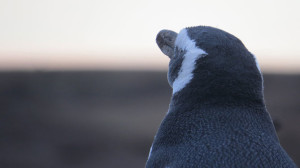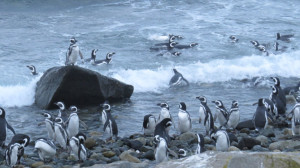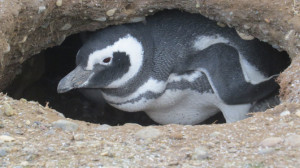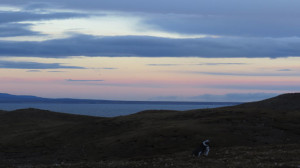PENGUINS, PENGUINS EVERYWHERE
PENGUINS, PENGUINS EVERYWHERE
By CHANTAL COOKE
Penguins, penguins and more penguins.
It’s the final morning of the cruise aboard the Via Australis – a trip that has taken us from tiny, remote Hornos Island at the tip of South America, through the Beagle Channel and Magellan Straits, past majestic glaciers, captivating wildlife and families of mini icebergs. We’ve heard the ice of Pia glacier groan. We’ve watched seals chase the ship and black browed albatrosses fly overhead. We’ve followed in the footsteps of Darwin and Fitzroy. We’ve eaten good food, drunk hot chocolate laced with Whiskey, and made new friends.
And now it’s time for the last trip ashore before we dock at Punta Arenas.
It may be the last – but it’s quite possibly one of the most unusual. This is Magdalena Island – home to 1000s of Magellanic Penguins. They are named after the explorer Ferdinand Magellan, who first spotted the birds in 1520.

Unfortunately, like so many species, these penguins are under threat from commercial fishing, oil pollution, and climate change. In the 1980s, more than 40,000 penguins died ervy year in Argentina due to oil pollution. Commercial fishing depletes the fish that penguins and other seabirds feed on, and penguins can get entangled in fishing nets. In Chile and Peru, some fisherman use penguins as fishing bait. As if that’s not enough, unregulated tourism and recreational activities can put additional strain on the penguins when they are breeding or resting on the beaches.

So before we start out walk we are given strict instructions not to disturb the birds, not to touch them or feed them and always to give them right of way if they wish to cross the path in front of us. By following these simple rules humans and penguins can both enjoy the island.
This late in the season (late March) only the adults are left. The juveniles have already swum north to Peru and Brazil while the adults hang out together to feed, put on weight and moult before the long swim to join their children.
Some wait by their nests – little burrows in the ground. Others socialise on the shore playing ‘chicken’ with the waves. There are play fights, preening, lots of flapping (a way to cool off in these close-to-freezing temperatures) and the general ‘looking nonplussed’ that penguins do so well. It’s easy to spend an hour (or more) watching (and photographing) their antics.

But if you’ve had enough of penguins then there are skuas and petrels dodging in and out between their flightless cousins. Plus views out across the sea and the chance to see the sunrise, pink and welcoming, over the headland.

Its cold, there is a biter wind and taking photos risks frozen fingers – but this is a rare treat. To walk on this tiny island among penguins, to see them in their natural habitat (not through glass in a zoo) to hear them, and yes, to smell them, is well worth a trip to the other end of the world.
And since it starts and finishes on the comfort of the Via Australis – there really is no excuse.
FACT BOX:
- Australis runs regular voyages around Cape Horn, through the Straits of Magellan, ending in Punta Arenas.
- British Airways flies direct to Buenos Aires. From there you can pick up a domestic flight to Ushuaia.
- To arrange your tour to Argentina contact Argentina Travel Partners
- To arrange a tour once in Chile contact ProTours Chile: contact@protourschile.com

About the Author:
Chantal Cooke is an award winning journalist and broadcaster with a passion for the planet. In 2002 she co-founded the award winning radio station PASSION for the PLANET and in 2009 Chantal was awarded London Leader in Sustainability status. Chantal also runs a successful communications agency – Panpathic Communications.
